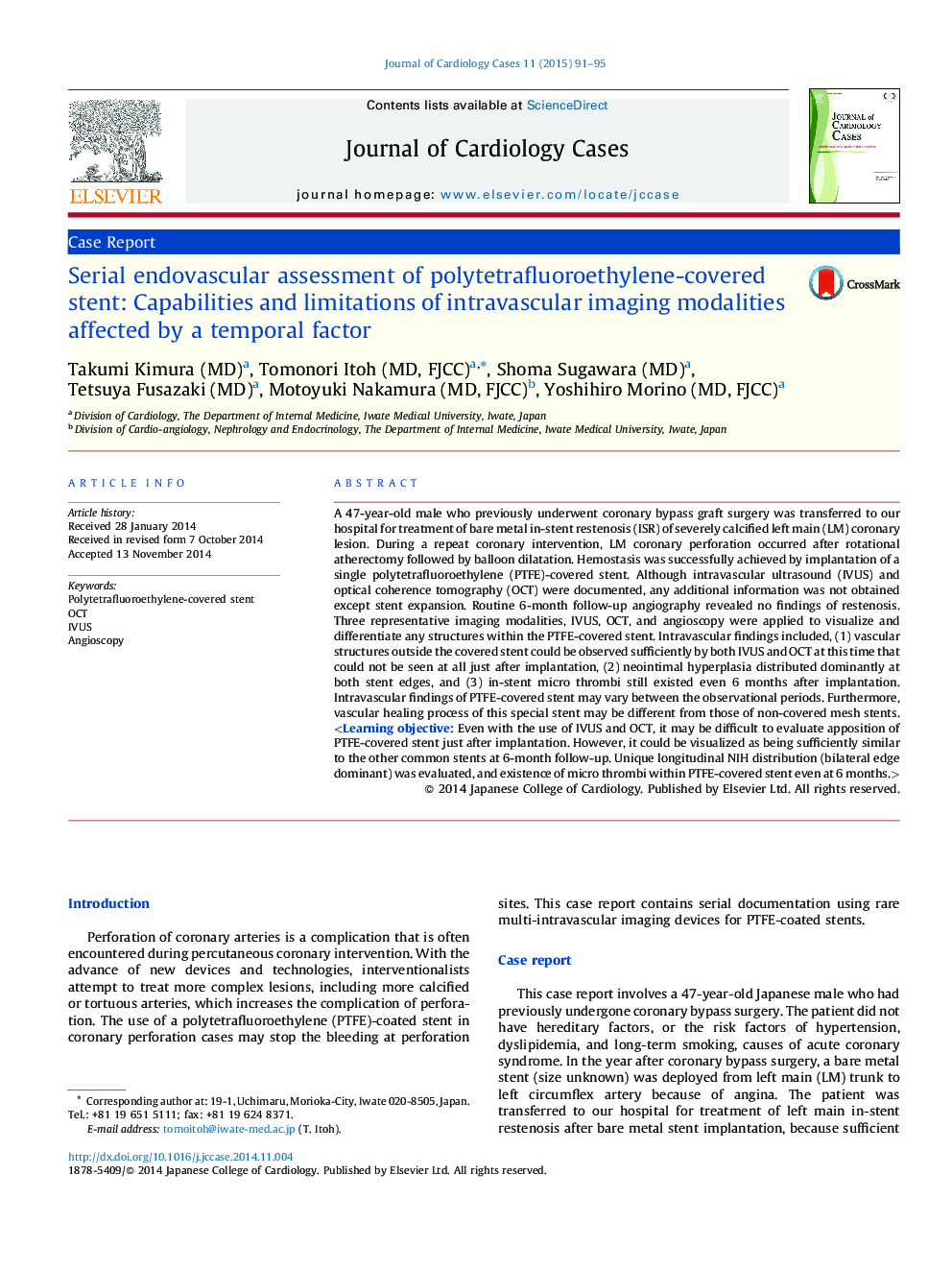| Article ID | Journal | Published Year | Pages | File Type |
|---|---|---|---|---|
| 2963875 | Journal of Cardiology Cases | 2015 | 5 Pages |
A 47-year-old male who previously underwent coronary bypass graft surgery was transferred to our hospital for treatment of bare metal in-stent restenosis (ISR) of severely calcified left main (LM) coronary lesion. During a repeat coronary intervention, LM coronary perforation occurred after rotational atherectomy followed by balloon dilatation. Hemostasis was successfully achieved by implantation of a single polytetrafluoroethylene (PTFE)-covered stent. Although intravascular ultrasound (IVUS) and optical coherence tomography (OCT) were documented, any additional information was not obtained except stent expansion. Routine 6-month follow-up angiography revealed no findings of restenosis. Three representative imaging modalities, IVUS, OCT, and angioscopy were applied to visualize and differentiate any structures within the PTFE-covered stent. Intravascular findings included, (1) vascular structures outside the covered stent could be observed sufficiently by both IVUS and OCT at this time that could not be seen at all just after implantation, (2) neointimal hyperplasia distributed dominantly at both stent edges, and (3) in-stent micro thrombi still existed even 6 months after implantation. Intravascular findings of PTFE-covered stent may vary between the observational periods. Furthermore, vascular healing process of this special stent may be different from those of non-covered mesh stents.
